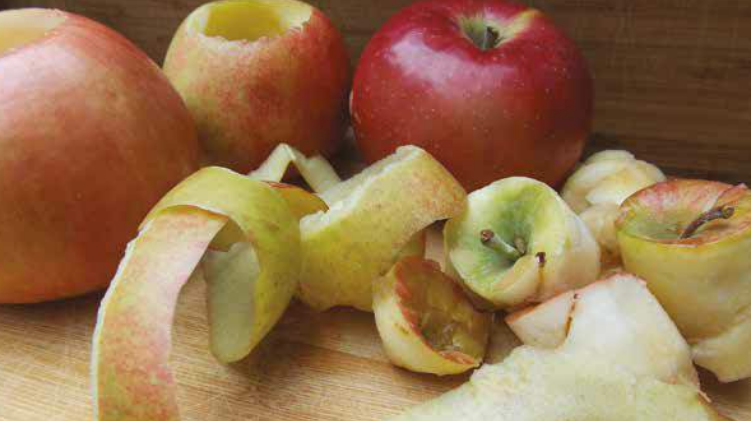Apple Scrap Vinegar
Apple Scrap Vinegar

Stockpile the cores and peels in the freezer until you have enough.
2-3 T. Sugar
2-3 C. filtered or non-chlorinated Water
1 lb. apple cores & peels (peels only if from organically grown apples)
Use 1 T. of the sugar per C. of water. Dissolve the sugar in the water. It is important to use non-chlorinated or filtered water because chlorine could prevent the fermentation process that is essential to making vinegar. Put the apple scraps into a ceramic, glass, or stainless-steel bowl, pot, or crock and pour the sugar water over them. Use enough of the liquid to cover the apples, but don’t worry if they float a bit. Cover with a clean dish towel and let sit at room temperature for 1 week. Every day, stir the ingredients vigorously at least once (more is better). Once fermentation begins, the liquid will froth up when you stir it. The liquid should have started to turn a darker color after one week of steeping and stirring. Strain out the fruit. Keep the liquid at room temperature, stirring once or more each day, for 2 weeks to 1 month. Its smell will shift from lightly alcoholic to vinegary and sour. The bacteria that create vinegar from alcohol require oxygen to do so. That’s why it’s important not to cover the liquid with anything airtight during the process. (FYI, all vinegar starts out as alcohol—it’s what the bacteria that make vinegar eat.) Once the vinegar tastes as strong as you’d like it, transfer it to bottles and screw on covers or cork. The vinegar is fine to use for salad dressings, marinades, and sauces anytime it tastes good to you. But if you want to use your homemade vinegar for safe pickling and canning, it needs to have at least 4.5 percent acetic acid, just like commercial brands do.